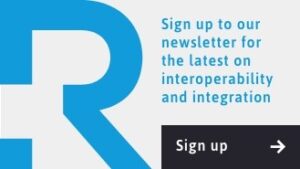How interoperability improves delayed discharges in healthcare
The latest NHS statistics (February 2020) show that there were 155,700 total delayed days of which 103,000 were in acute care. This is equivalent to an average of 5,370 patients.
A delayed transfer of care is commonly known as ‘bed blocking’. It occurs when a patient is ready to leave hospital or other care provider but is unable to leave for non-medical reasons. These delays may be due to the patient waiting to be transferred to a nursing home or changes are needed within their home to enable them to return to living independently.
There is clear evidence that if a person spends time in hospital when they are medically fit, their future health and longevity is adversely affected. The National Audit of Intermediate Care argues that ‘for older people a delay of more than two days negates the additional benefits of intermediate care and seven days is associated with a 10% decline in muscle strength due to long periods of immobility in a hospital bed.’
The impact of delayed discharges
The obvious problem with delayed transfers is that they reduce the capacity available for hospitals or care organisations to treat other patients. This subsequently impacts NHS waiting times and puts pressure on primary care.
According to The King’s Fund, delayed transfers of care also impact negatively the finances of health and social care service provision. A patient fit for discharge may not require the same intensity of care, but the hospital must still provide staff and associated resources, linen, food, medications etc.
There is no single cause of delayed transfers of care. Thus, there is no single remedy. The two main causes of delayed transfers in February 2020 across health and care were ‘patients awaiting further non-acute NHS care’ and ‘patients awaiting care package in their own home’.
Engaging multidisciplinary teams is key

The delayed discharge clock only starts ticking when a multidisciplinary team (MDT) has decided the patient is ready for discharge. This means that NHS figures could be understated. Communication between the MDT should start at the time of admission or even before, especially where a care plan exists.
Engaging the multidisciplinary team in the assessments necessary for a safe transfer of care in a timely manner, not only ensures safe discharge of the individual, but also improves communication between teams and results in better outcomes.
Where changes to the home or the provision of assistive equipment are required, the earlier the service providing these supports can be engaged, the more likely it is that these will be completed on time. In order to ensure that such collaboration can begin as soon as possible and be completed in a timely and effective and efficient manner, there is a requirement to ensure that all the relevant data is available to those making the decision.
In most cases, the team involved in the immediate and follow up care have a range of source systems on which they rely for the management of their individual services. This is not conducive to the sharing of data and the availability of information required to make informed decisions in a timely manner. There remains within the NHS and Social Services a high reliance on the use of paper to plan and share data, and to achieve the objective required to facilitate a safe discharge from hospital to care in the community.
Interoperability minimises delayed transfers of care through data sharing
Delayed transfers of care can be minimised through MDTs planning discharges more effectively. Joint working between disparate services ensures safe, timely and informed transfers. But giving every health or care professional involved in a patient’s care, access to every other system, is simply not practical. And paper-based communications are prone to error as well as not being real-time.
An interoperable clinical record such as the IMX Clinical Record provides staff in any care setting with a single view of the patient data they need in order to undertake their individual roles effectively, and also to make informed decisions together. Far from being a replacement for the core/source systems each organisation uses; IMX simply pulls the exact information each user needs to see and presents it clearly.
Using the IMX Clinical Record, clinical and professional staff are able to see data from other systems and thus augment the data which is available from their own source system. Individuals involved in the delivery of care are using the most recent information on which to base decisions.
Beyond data sharing to collaborative working
Good interoperable clinical records can also provide ‘write-back’ functionality so care plans and discharge notes can be updated and shared with MDT’s in real-time. A data store for messages and images can also be developed.
By transferring paper forms to digital, organisations can create a range of interactive documents. It is also possible to link the existing Electronic Document Management solutions and the PACS systems to provide a richer historical view of the individual, where required. GPs can also view discharge letters immediately instead of waiting for paper and rekeying information into their systems.
A platform such as IMX enriches the collaboration between professional groups and reduces the delays associated with the current sharing of information. Communication improves across, and between, organisations to ensure efficient discharge of the patient and proper ongoing care.
Further information
For a demo of IMX, speak to a consultant today on 01392 363888 or email [email protected] to arrange a quick Teams call.
This blog is an updated version of our consultant’s article written in 2018.


